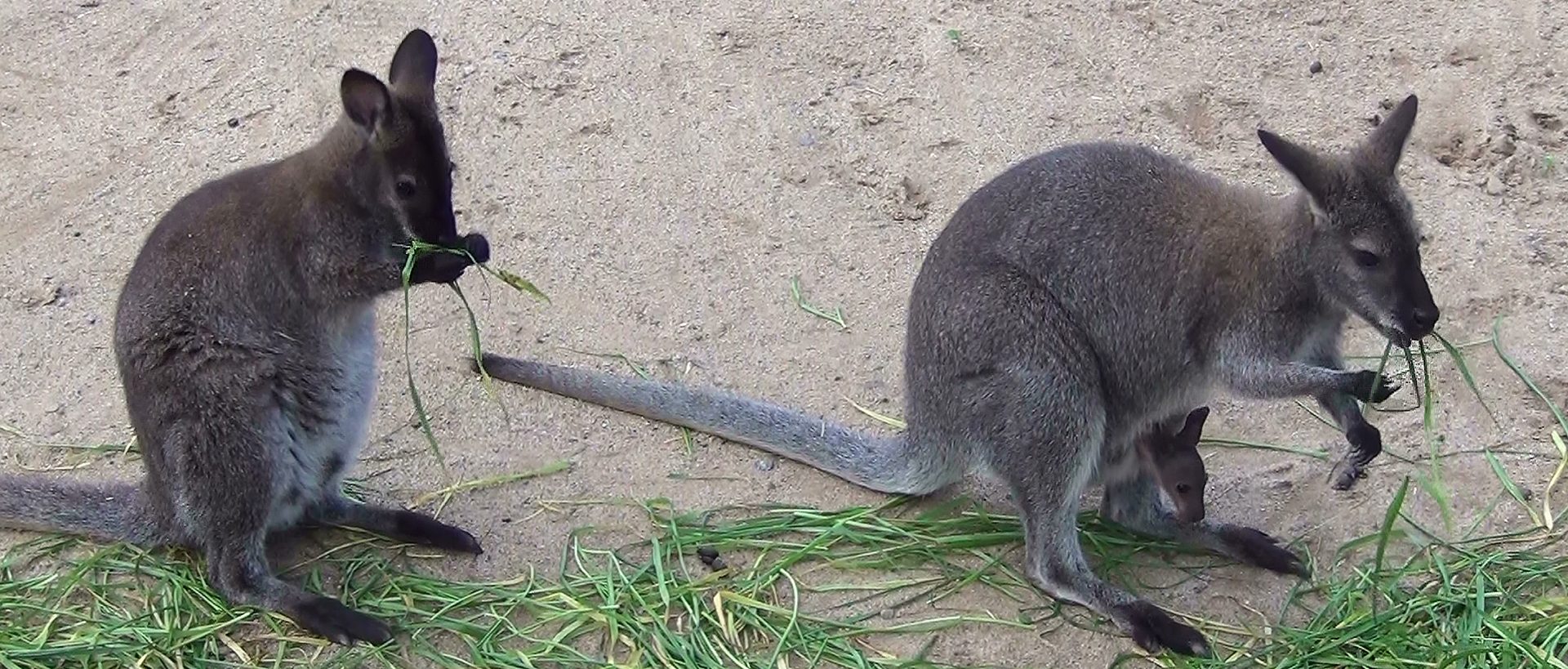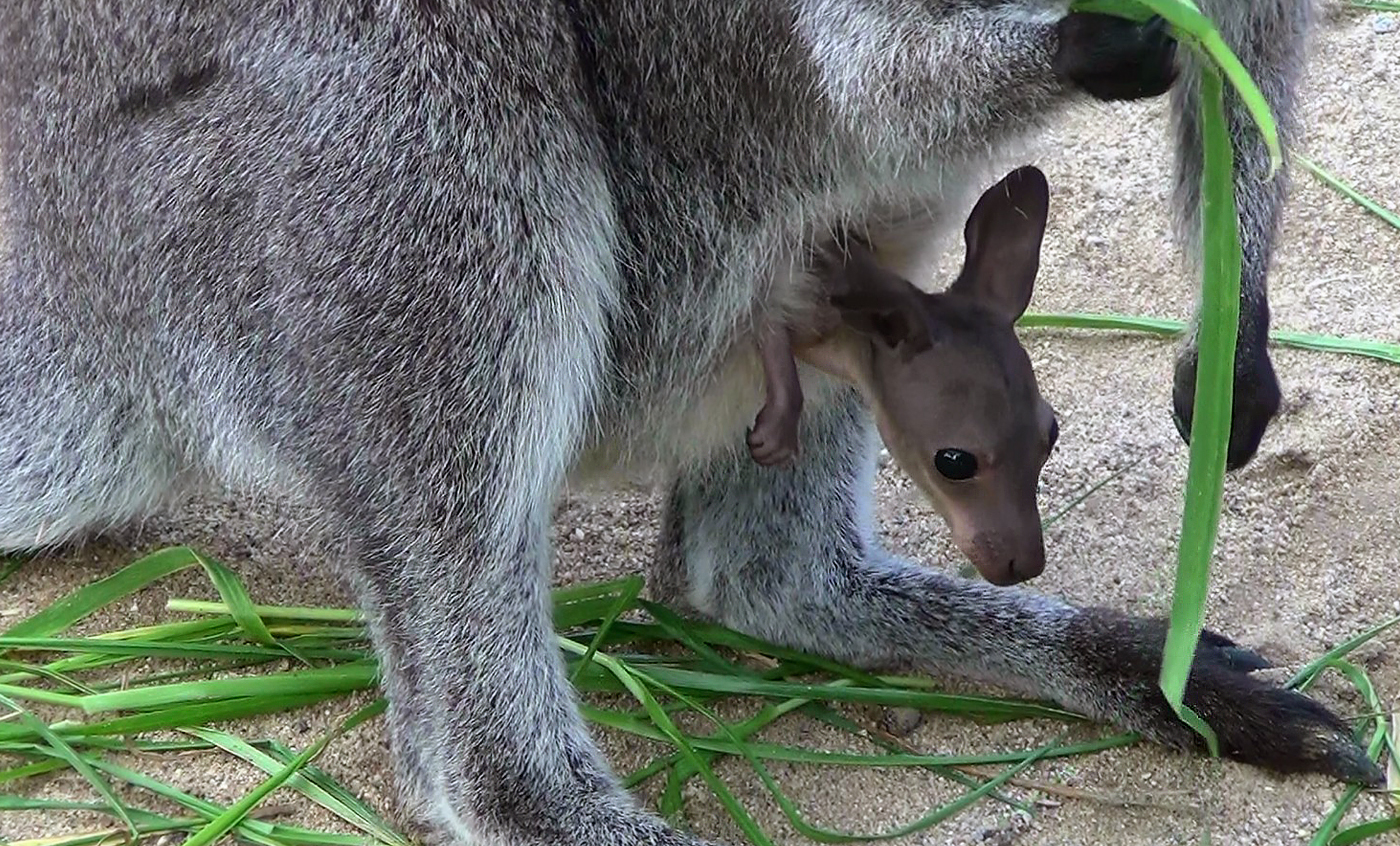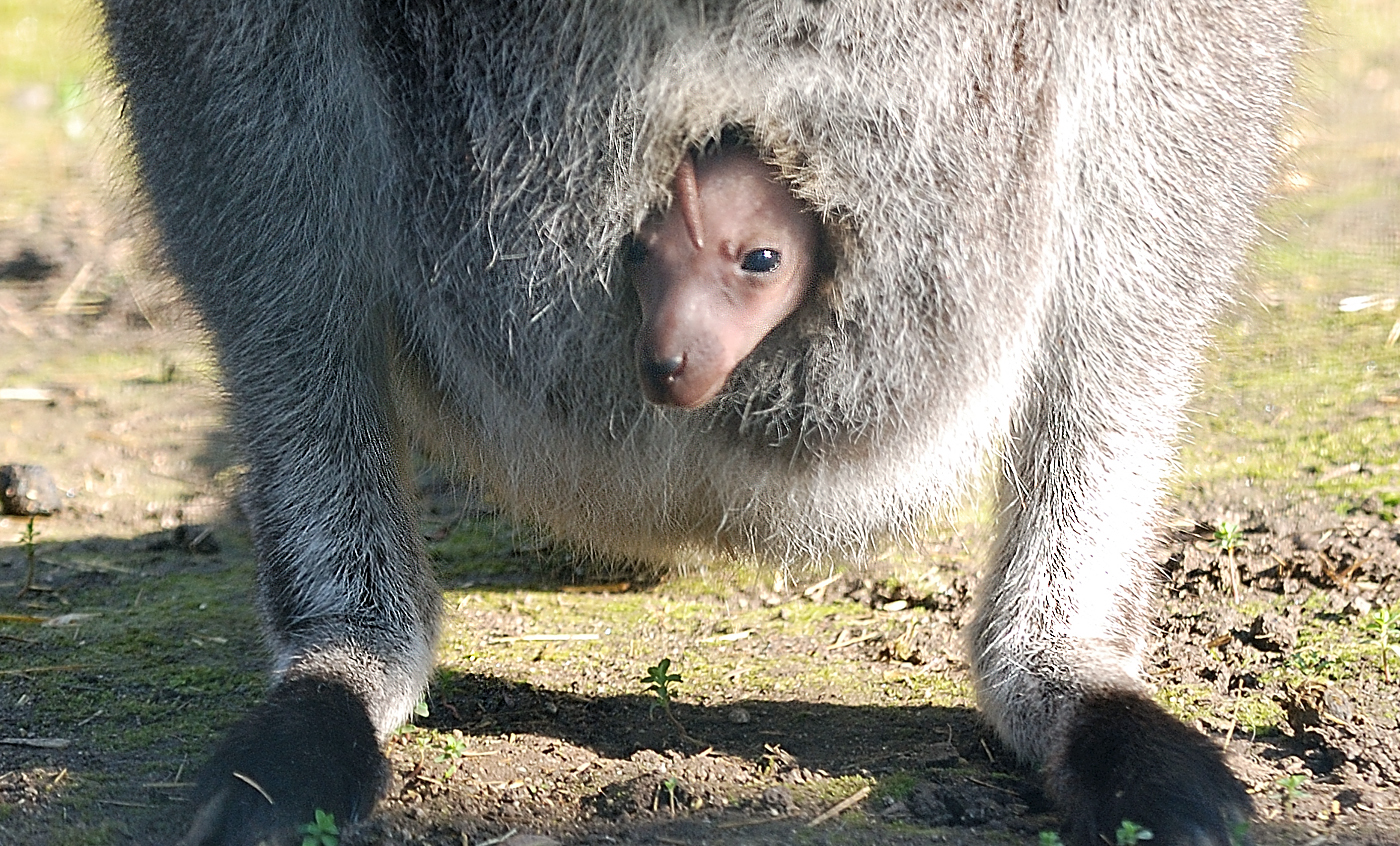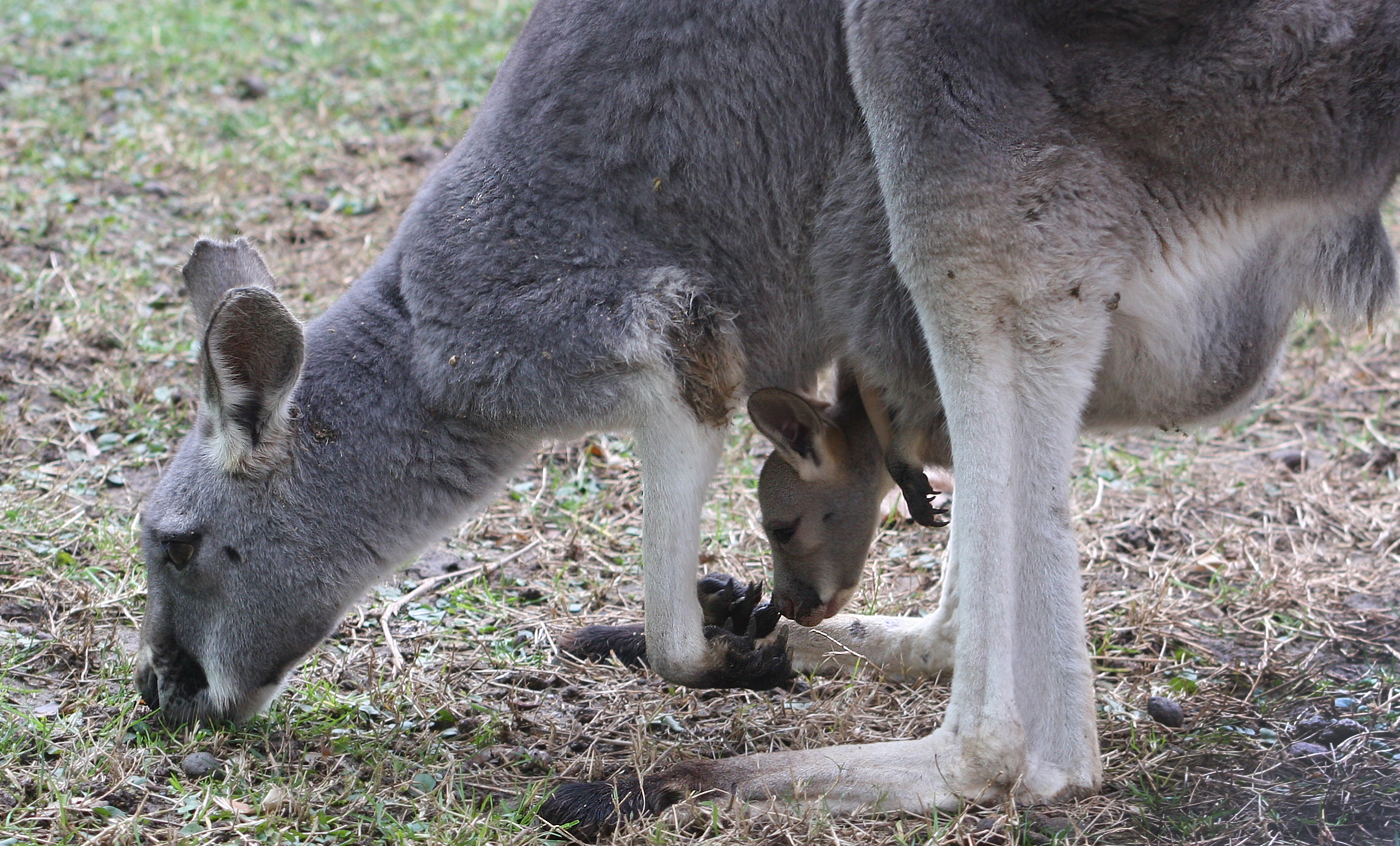Red-necked wallaby
They live in dry forests, especially in less dense areas. The distribution area is the coastal regions of southern and southeast Australia, as well as Tasmania and other smaller islands.
Like all marsupials, gestation periods are extraordinarily short and the single joey is born still not fully developed, spending 5 or 6 months in the marsupial, a pouch that opens in the stomach area of the females.
Natural habit
Southeast Australia and Tasmania.
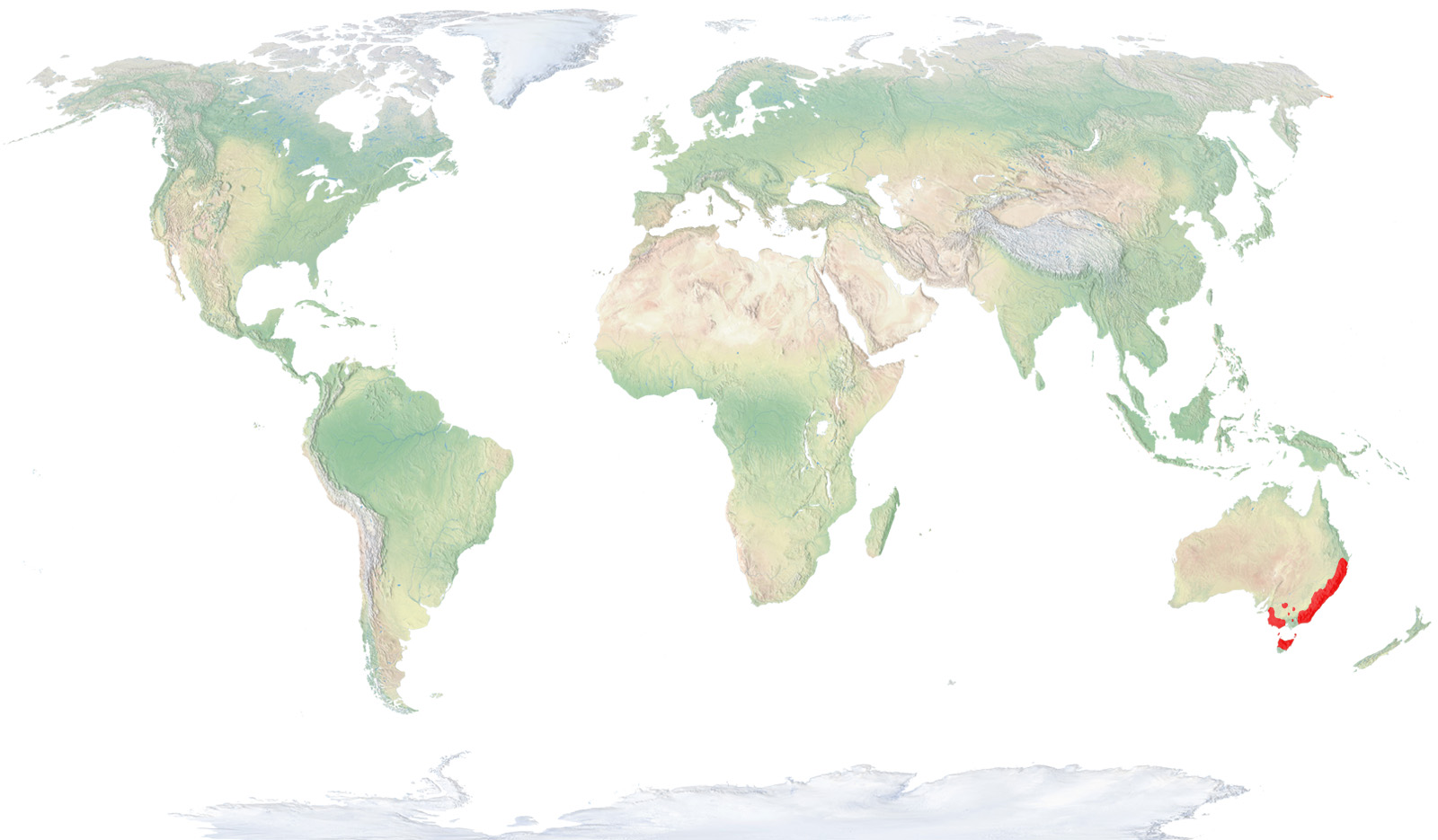
- Distribution / Resident
- Breeding
- Wintering
- Subspecies
Risk level
- Extint
- Extint in the wild
- Critically endangered
- In Danger
- Vulnerable
- Near threatened
- Minor concern
- Insufficient data
- Not evaluated
Taxonomy
Physical characteristics
Biology
Reproduction
Biology
The red-necked wallaby owes its name to the reddish wash across its shoulders, which contrasts with the grey colour of the rest of its coat. The dark, almost black, colour of its nose and paws and the white strip on the top of its lip are other distinguishing traits.
They live in dry sclerophyll forests, especially in less dense areas close to open pastures.
They basically feed on grass and leaves and, during droughts, tend to seek out juicy roots to obtain liquid.
Like all marsupials, gestation periods are extraordinarily short and the single joey is born still not fully developed, which is why it spends five or six months in the marsupial, a pouch that opens in the stomach area of the females.
Customarily seen at night and twilight, they spend the hottest hours of the day resting under cover. When there are abundant resources, they tend to form groups with a social hierarchy, but they can also live solitary lives.
Although females may remain in the family territory their whole lives, males tend to leave when they are two years old.
Their numbers have grown recently in some areas due to a break in hunting and felling trees, which contributes to the appearance of pasture lands for these animals.




